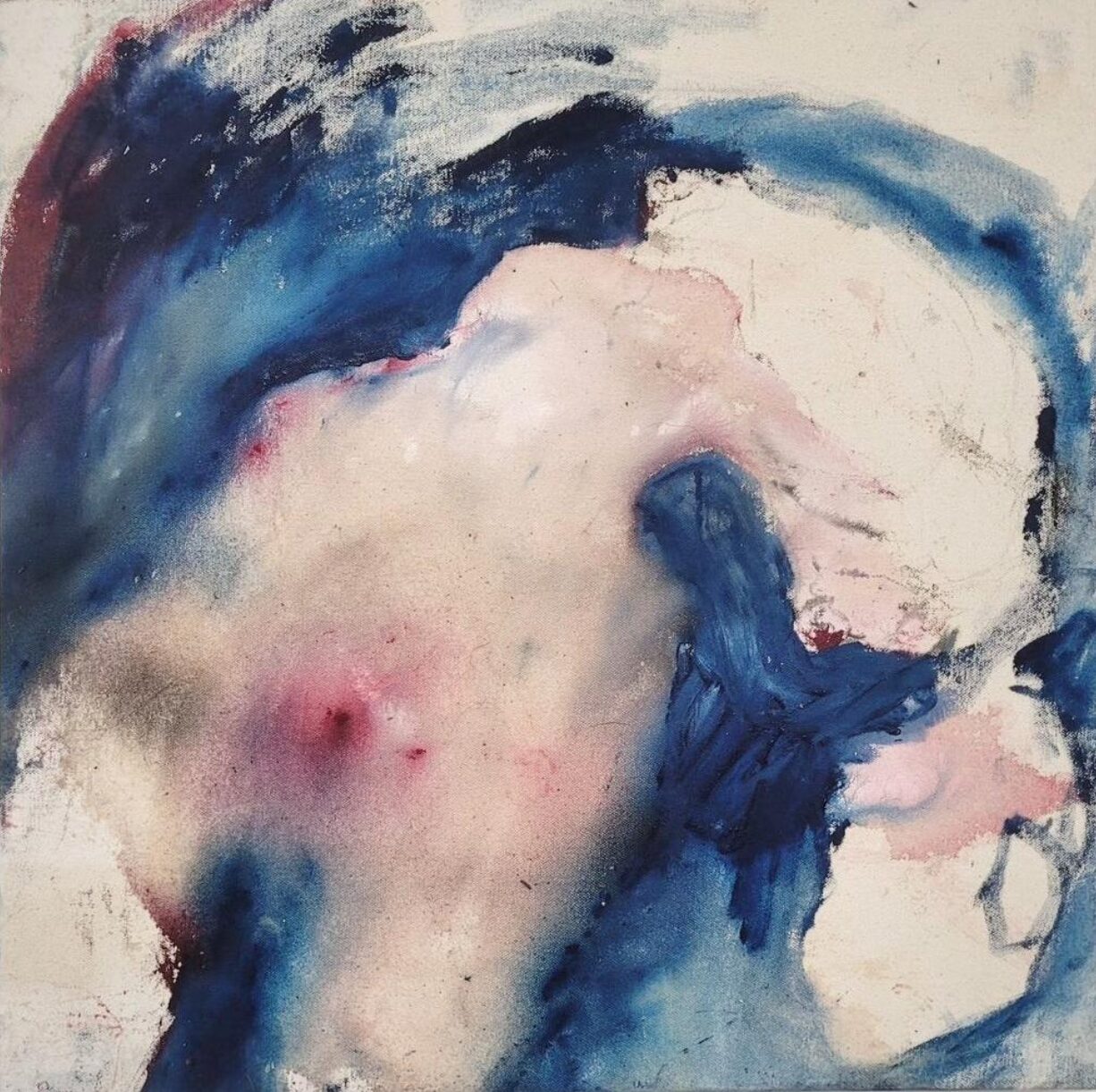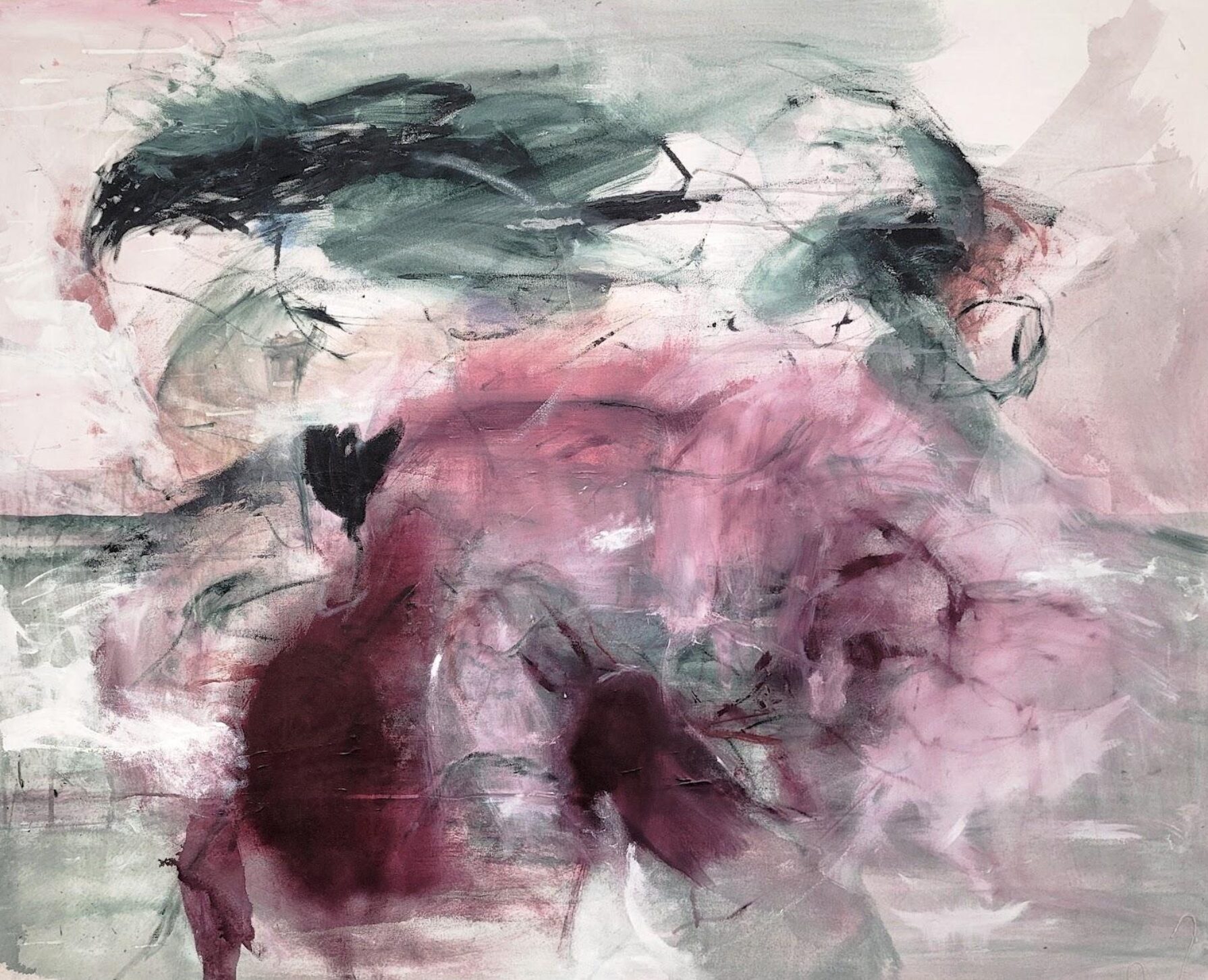Darcy Brenna paints with an animated urgency in which tranquil tenderness coexists with her gestural and intuitive mark making. Like streams of consciousness, her fluid brushstrokes capture the boundless complexity of human emotion and the female experience in unapologetic and emotionally charged paintings.
Your work is characterised by the layering of expressive brushstrokes, which come together to form paintings that exude a really raw and powerful sense of emotion. Can you describe your process and how the physicality of your brushwork relates to your practice?
Personally, I find that the process is just as important as the final outcome. I like working with large canvases because they allow my body to connect with my mind. I think of it like a form of somatic movement, where the focus is on the internal experience. I’ve found in the past that when I paint on a smaller scale, my range of movement is very rigid and confined, but when I work on a large canvas, I’m able to really put my whole body into the work. It’s a very physical act.
In regards to the layering of my work, I think of it as a dialogue between a child and a critic within me. First, I allow the child to come and play freely, and then the critic steps in to judge and rework the piece. I believe it’s this dynamic within myself that creates the layers. Sometimes, I can paint (up to) ten or twenty layers, each representing different conversations I had with myself during the process. In the end, all the layers become an echo of emotions.
When dealing with work that is so linked to your personal experiences, is there a cathartic quality to unleashing this energy on the canvas?
There definitely is. When I paint, it’s the only time when my mind feels linear. I’m a very emotional and reactive person, so sometimes, painting can be very confronting for me. It tells me things about myself I didn’t know yet – or didn’t want to face yet. Over time, I’ve learnt to think of painting as a conversation between myself and the paint. But, for example, when I first started the residency, I was still painting very figuratively. Now, my work has become a lot more abstract because I do think I’ve learnt to see painting as something cathartic, like a direct response to how I’m feeling in a specific moment. However, figures and bodies will always be found in my work. I think you just need to search for them now.


